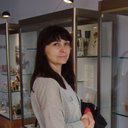Bosnian
Albanian
Arabic
Armenian
Azerbaijani
Belarusian
Bengali
Bosnian
Catalan
Czech
Danish
Deutsch
Dutch
English
Estonian
Finnish
Français
Greek
Haitian Creole
Hebrew
Hindi
Hungarian
Icelandic
Indonesian
Irish
Italian
Japanese
Korean
Latvian
Lithuanian
Macedonian
Mongolian
Norwegian
Persian
Polish
Portuguese
Romanian
Russian
Serbian
Slovak
Slovenian
Spanish
Swahili
Swedish
Turkish
Ukrainian
Vietnamese
Български
中文(简体)
中文(繁體)
BMC Complementary and Alternative Medicine 2019-Oct
Samo registrirani korisnici mogu prevoditi članke
Prijavite se / prijavite se
Veza se sprema u međuspremnik
Najkompletnija baza ljekovitog bilja potpomognuta naukom
- Radi na 55 jezika
- Biljni lijekovi potpomognuti naukom
- Prepoznavanje biljaka po slici
- Interaktivna GPS karta - označite bilje na lokaciji (uskoro)
- Pročitajte naučne publikacije povezane sa vašom pretragom
- Pretražite ljekovito bilje po učincima
- Organizirajte svoja interesovanja i budite u toku sa istraživanjem vijesti, kliničkim ispitivanjima i patentima
Upišite simptom ili bolest i pročitajte o biljkama koje bi mogle pomoći, unesite travu i pogledajte bolesti i simptome protiv kojih se koristi.
* Sve informacije temelje se na objavljenim naučnim istraživanjima



